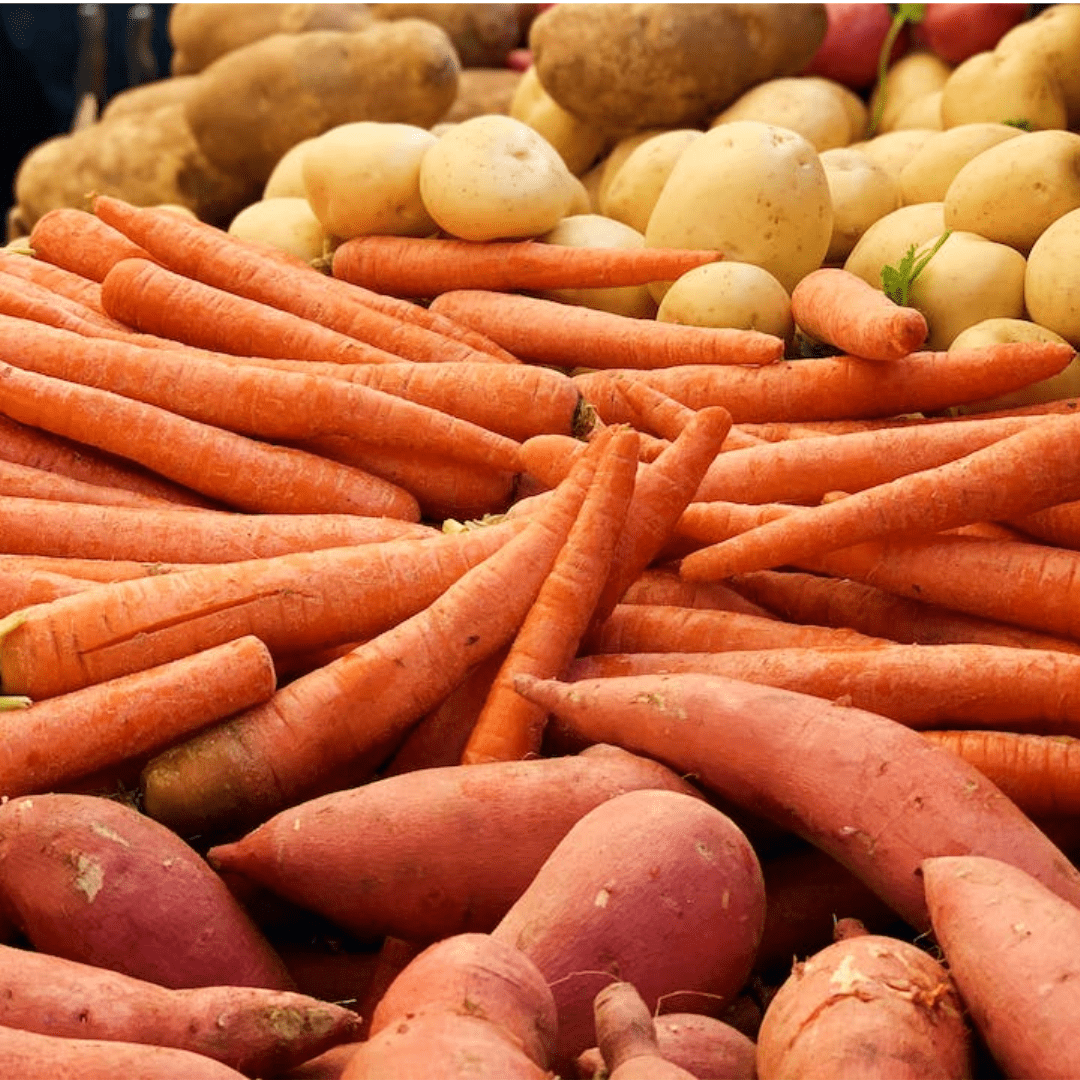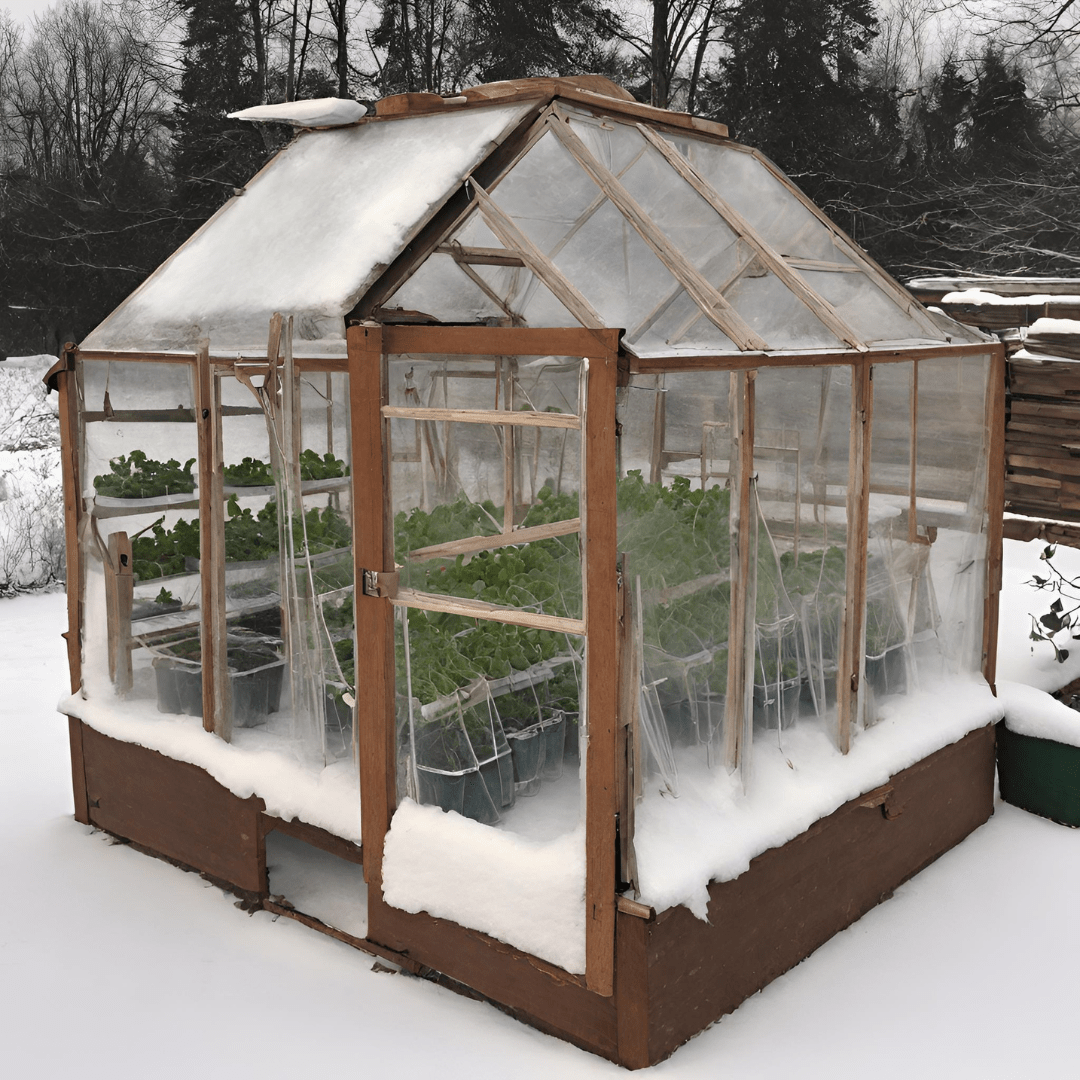Root vegetables for winter sowing.
What Is Included in This Post:
- Introduction: The Importance of Winter Sowing for Root Vegetables
- Understanding the Benefits of Root Vegetables in Winter Gardens
- Top Winter Sowing Tips for Successful Root Vegetable Cultivation
- The Ultimate List of Winter-Sowing Root Vegetables
- Exploring Nutritional and Culinary Values of Winter-Grown Root Vegetables
- Winter Harvesting and Storage Techniques for Root Vegetables
- Troubleshooting Common Challenges in Winter Sowing of Root Vegetables
- Conclusion: Embrace the Winter Season with Thriving Root Vegetable Gardens
- Frequently Asked Questions
Winter sowing, the practice of sowing seeds outdoors during the winter months, offers a unique opportunity for you to extend your growing season and cultivate an array of root vegetables. While many vegetables struggle to thrive in cold temperatures, root vegetables are remarkably resilient and can flourish even in the harshest winter conditions. This article serves as a comprehensive guide to the world of winter-sown root vegetables, exploring their benefits, tips for successful cultivation, a curated list of varieties to consider, and insights into their nutritional and culinary values. Whether you are an experienced gardener looking to expand your winter harvest or a beginner eager to embrace the joys of winter gardening, this article will provide you with all the necessary information to create a thriving root vegetable garden during the colder months.
This is a pinnable post. Tap or hover over any image in this post to pin to your Pinterest Boards.

Introduction: The Importance of Winter Sowing for Root Vegetables
Root vegetables are like the unsung heroes of the vegetable world. They patiently grow beneath the surface, silently gathering nutrients and flavors until they’re ready to burst onto our plates in a parade of deliciousness. But did you know that these hardy veggies can thrive even in the coldest of winters? That’s where winter sowing comes in. In this article, I’ll dive into the world of winter sowing and explore why it’s a game-changer for root vegetables.
Understanding the Benefits of Winter Sowing
Winter sowing is the practice of starting seeds outdoors during the winter months, using miniature greenhouses or protective coverings to create a controlled environment for germination. While it may seem counterintuitive to sow seeds in the chilly season, it actually offers several benefits for root vegetables.
Firstly, winter sowing allows root vegetables to develop strong and resilient root systems. As they grow slowly in cool temperatures, their roots have ample time to establish and strengthen, resulting in healthier plants overall.
Secondly, winter sowing helps mimic the natural conditions that many root vegetables thrive in. Certain root vegetables, such as carrots and parsnips, prefer cooler climates and perform exceptionally well when sown in winter. By embracing their preferred growing conditions, you’ll be rewarded with tastier and more robust crops.
Lastly, winter sowing gives you a head start on the growing season. By starting your root vegetables early, you can extend their growing period and enjoy an earlier harvest. Plus, it’s a great way to beat the winter blues and get a jumpstart on your gardening endeavors.
Understanding the Benefits of Root Vegetables in Winter Gardens
Root vegetables not only brave the winter cold, but also bring a host of benefits to your winter garden. Let’s uncover why these fabulous underground treasures are worth growing during the frosty season.
Nutritional Value and Health Benefits of Root Vegetables
Root vegetables are a powerhouse of nutrition. Packed with vitamins, minerals, and fiber, they offer a range of health benefits. From the vitamin C-rich turnips to the potassium-packed sweet potatoes, these veggies contribute to a well-rounded and wholesome diet. Plus, their vibrant colors and earthy flavors make them a delightful addition to any meal.
Culinary Versatility of Root Vegetables
Root vegetables are not only nutritious, but also incredibly versatile in the kitchen. Whether you roast them, steam them, mash them, or add them to stews and soups, their hearty flavors and textures bring depth and soul to dishes. From the classic carrot cake to the comforting warmth of beet and potato soup, root vegetables offer endless possibilities for culinary creativity.
Top Winter Sowing Tips for Successful Root Vegetable Cultivation
Ready to embark on your winter sowing journey with root vegetables? Here are some essential tips to help you achieve success in your garden even during the coldest months.
Choosing the Right Root Vegetables for Winter Sowing
Not all root vegetables are created equal when it comes to winter sowing. Some, like turnips, parsnips, and radishes, are winter warriors and can withstand the cold temperatures. Others, like carrots and beets, prefer cooler weather, but need a bit more protection. Choose varieties that are known for their cold tolerance and adjust your selection based on your specific climate.
Best root vegetables for winter sowing:
- Turnips.
- Parsnips.
- Radishes.
- Carrots.
- Beets.
Preparing the Garden for Winter Sowing
Preparing your garden for winter sowing is crucial to ensure optimal growing conditions for your root vegetables. Clear away any debris, weeds, or leftover plants from the previous season. Loosen the soil and add compost or organic matter to improve its structure and fertility. Creating well-draining soil is essential to prevent waterlogging during the winter months.
Timing and Temperature Considerations
Timing is everything when it comes to winter sowing. Ideally, you want to sow your seeds a few weeks before the first frost is expected. This gives the seeds enough time to germinate and establish before the harsh winter sets in. Be sure to check your local frost dates and plan accordingly.
Seed Starting Techniques for Winter Sowing
When it comes to starting seeds in winter, there are a few techniques that can help ensure success. Utilizing mini greenhouses, cold frames, or even simple DIY coverings can provide the necessary protection and insulation for your seeds. Additionally, using seed trays or containers with a high-quality seed starting mix will provide optimal conditions for germination.
The Ultimate List of Winter-Sowing Root Vegetables
Now that you’re armed with knowledge and tips for winter sowing, let’s explore the ultimate list of root vegetables that excel in winter gardens. From the classic stalwarts to lesser-known gems, these root vegetables will add a burst of flavor and color to your winter harvest. Get ready to expand your culinary horizons and embark on a winter gardening adventure like no other!
Exploring Nutritional and Culinary Values of Winter-Grown Root Vegetables
Nutritional Benefits of Winter-Grown Root Vegetables
Winter-grown root vegetables are not only delicious, but also packed with nutritional goodness. These underground wonders are a great source of vitamins, minerals, and fiber, making them an excellent addition to your winter diet. From the vitamin C boost of winter radishes to the potassium-rich turnips, these root veggies offer a range of health benefits. Incorporating them into your meals can help support your immune system, improve digestion, and give you the energy to tackle those chilly winter days.
Cooking and Recipe Ideas for Winter-Grown Root Vegetables
When it comes to cooking with winter-grown root vegetables, the possibilities are endless. Roasted, steamed, mashed, or even grated into salads, these versatile veggies can add depth and flavor to any dish. Try roasting a medley of carrots, parsnips, and beets with a drizzle of olive oil and a sprinkle of herbs for a simple yet satisfying side dish. If you’re feeling adventurous, why not make a comforting rutabaga and potato mash or a hearty beet and turnip soup? Get creative in the kitchen and let the earthy sweetness of these root vegetables shine through.
Winter Harvesting and Storage Techniques for Root Vegetables
When and How to Harvest Root Vegetables in Winter
Harvesting root vegetables in winter requires a bit of planning and know-how. It’s best to wait until the frost has set in and temperatures have dropped consistently before digging up your root crops. Use a fork or shovel to gently loosen the soil around the vegetables, being careful not to damage them. Once harvested, remove any excess soil, but don’t wash them as this can shorten their storage life. Trim off the greens, leaving about an inch of the stem intact to prevent moisture loss.
Proper Storage Methods for Winter-Harvested Root Vegetables
To ensure your winter-harvested root vegetables stay fresh and delicious for as long as possible, proper storage is key. Store them in a cool, dark, and well-ventilated space, such as a root cellar or a cool basement. Ideal temperature ranges vary depending on the vegetable, but most root crops thrive between 32°F (0°C) and 40°F (4°C). Be sure to check them regularly and remove any spoiled or damaged ones to prevent rot from spreading. With the right storage conditions, you can enjoy the flavors of your winter harvest well into the season.
Troubleshooting Common Challenges in Winter Sowing of Root Vegetables
Dealing with Frost and Cold Damage
Winter gardening comes with its fair share of challenges, and frost can be a major concern. To protect your root vegetables from frost damage, consider using row covers or protective mulch to insulate the soil and retain heat. Watering the plants a day before an expected frost can also help prevent damage by keeping the soil temperature more stable. If you do notice signs of frost damage, such as wilting or browning leaves, don’t panic. Simply trim off the damaged parts and give your vegetables some extra care and attention to help them bounce back.
Preventing Pests and Diseases in Winter Gardens
Even in winter, pests and diseases can find their way into your garden. To prevent unwanted visitors from feasting on your root vegetables, practice good garden hygiene by removing any dead plant material and debris that may harbor pests or diseases. Additionally, employing companion planting techniques can help deter pests naturally. For example, planting garlic or onions near your root vegetables can ward off pests like aphids and root maggots. Regularly inspect your plants for any signs of pests or diseases, and if necessary, consider using organic pest control methods to keep your garden healthy and thriving.
Conclusion: Embrace the Winter Season with Thriving Root Vegetable Gardens
Winter doesn’t have to be a barren season for your garden. By growing winter-hardy root vegetables, you can add vibrant colors and nutritious flavors to your winter meals. With a little planning, proper harvesting and storage techniques, and some troubleshooting know-how, you can have a successful winter garden that brings joy even in the coldest months. So, don’t let the frosty weather discourage you – embrace the winter season and watch your root vegetable garden thrive!
In conclusion, winter sowing root vegetables opens up a world of possibilities for gardeners seeking to make the most of the colder months. With their nutritional benefits, culinary versatility, and resilience to winter conditions, root vegetables are the perfect choice for winter gardening. By following the tips and techniques outlined in this article, you can successfully cultivate a diverse selection of root vegetables, ensuring a bountiful harvest even in the depths of winter. So why not embrace the season and embark on a journey of winter gardening, enjoying the flavors and rewards that these hardy vegetables have to offer? Start sowing and discover the joys of thriving root vegetable gardens during the winter season.

Frequently Asked Questions
1. Can I sow root vegetables directly in the ground during winter?
Yes, you can sow root vegetables directly in the ground during winter. However, it is important to ensure that the soil is adequately prepared and free from frost. Additionally, using protective measures such as row cover or cold frames can help provide insulation and protect the seeds from extreme cold.
2. Are there specific root vegetable varieties that are better suited for winter sowing?
Yes, certain root vegetable varieties are better suited for winter sowing. Vegetables like carrots, beets, turnips, parsnips, and radishes tend to thrive in colder temperatures. It is advisable to choose varieties that have shorter maturity dates and are known for their cold tolerance to optimize your winter harvest.
3. What are some common challenges in winter sowing of root vegetables?
Some common challenges in winter sowing of root vegetables include frost damage, pest infestations, and diseases. It is essential to monitor the weather conditions closely, provide proper insulation and protection, and implement pest and disease management strategies to overcome these challenges. Additionally, timing the sowing correctly and providing adequate watering is crucial for successful winter cultivation.
4. How long can I store winter-harvested root vegetables?
The storage duration of winter-harvested root vegetables can vary depending on the specific vegetable and storage conditions. Generally, root vegetables like carrots, beets, and turnips can be stored for several months when kept in cool and humid conditions. Proper storage techniques, such as removing foliage, cleaning, and storing them in perforated bags or containers to maintain airflow, can help extend their shelf life.
Summary
I hope I have inspired you to try your skills at winter sowing with these tips and products.
If you were encouraged by this post, I invite you to check out my FREE Printables Page for fun free printables, planners, and charts.
ENTER MY FREE Printables Page HERE
Here are some more of my winter gardening inspiration posts to check out!
How to Grow Cold Hardy Greens for Winter Sowing
Top Winter-Sowing Vegetables for a Head Start in the Garden
Getting Started with Winter Sowing: The Ultimate Guide
The Benefits of Successful Winter Sowing for Vegetables in Containers
The Ultimate Guide to Choosing the Best Soil for Winter Sowing
Planning Your Garden: How to Plan a Vegetable Garden: Expert Green Thumb Tips!
Winterizing the Garden: How to Winterize Your Vegetable Garden: Step-by-Step Checklist
Mulching the Garden: How to Make Leaf Litter Mulch
How to Grow a Fall Garden: 9 Best Fall Crops
Blessings,
The Off Grid Barefoot Girl





